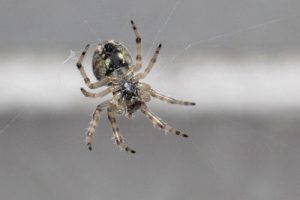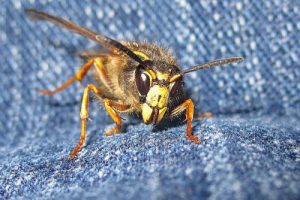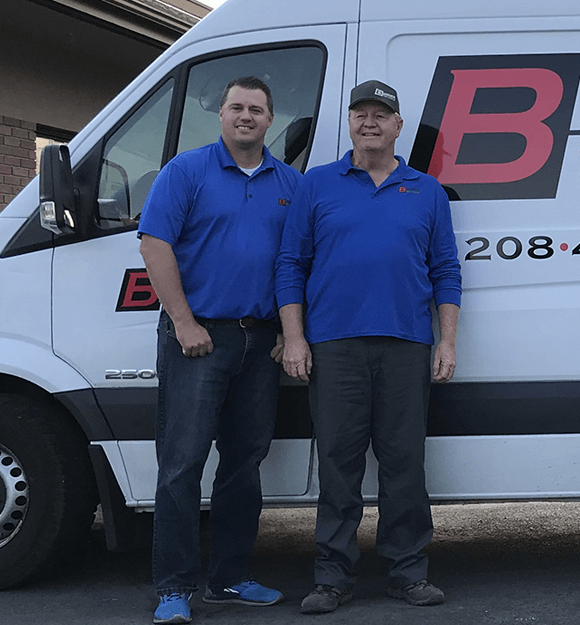Identifying Insects
When you see an insect in your home or property, your first response will likely be to shoo it away. However, Insect Identification advises that careful observation of pests can yield important information, helping you determine why you are having a problem and where any nests might be.In identifying insects, where and what time of day you first saw them is relevant. It is also helpful to have your camera ready so you can zoom in close and take photos. When observing these insects, some questions to ask yourself include:

- How many legs does it have? Insects typically have six legs, whereas spiders have eight.
- Does it have wings? Some insects have somewhat ornamental wings, whereas others use them for actual flying.
- Does it have unusual markings? Insects can often be identified by markings on their head or back.
- Does it have antennae or feelers? If so, note whether they end in a straight point or have knotted ends.
Common Insects In The Treasure Valley
Once you have answers to the above questions, narrowing down what type of insect you are dealing with is easier. The City of Boise advises that common varieties found in parks and throughout the community include:- Blue Dashers:
 A type of dragonfly, common near water sources;
A type of dragonfly, common near water sources; - Praying Mantis: Bright green or brown, their high front legs make them easy to identify;
- Woodland Skippers: A bright yellow/orange moth, common in the summer months;
- Katydids: Related to grasshoppers, these resemble leaves and chirp at night;
- Drone Flies: Though similar in appearance, drone flies only have two wings, whereas bees and wasps have four.
- Hornets and Yellowjackets: Yellowjackets are known for their namesake markings. They tend to nest underground, whereas hornets nest above.
- Black Widow Spiders: These highly poisonous spiders are shiny black, with an orange or red hourglass on the abdomen.
When you have questions and concerns about insects on your property, Barrier Pest Control is here to help. We can help identify the problem while offering you solutions that are both safe and effective. To speak with one of our Boise bug control representatives, please feel free to reach out and call (208) 463-4533 or contact us online today.
Invasive Pests In Boise & Surrounding Areas
Invasive pests are any insect or species not native to the area. The National Wildlife Federation (NWF) states that humans often unintentionally spread them through boxes, pallets, and shipping containers used to transport products and services from other locations. Shifts in climate and weather conditions can also cause invasive species to migrate from surrounding states. Either way, they could destroy plants or trees and risk human health.Being alert to invasive pests and reporting them to our pest professionals immediately can help minimize damage. The Idaho Department of Invasive Species names the following as among those most common in Idaho:
- Africanized Honey Bees:
 These are smaller than regular honey bees and are more likely to swarm or act aggressively.
These are smaller than regular honey bees and are more likely to swarm or act aggressively. - Gypsy Moths: Idaho has several invasive moth species, all of which can cause significant damage. Gypsy moths are distinctive for their grayish-brown weaves. As caterpillars, they can be identified easily by the spots on their backs.
- Japanese Beetle: Identified by their shiny green color, these attack and destroy over 300 different types of plants and trees. They can also prove damaging to lawns, decimating grass and turf.
- Fire Ants: These cause unsightly mounds and tunnels throughout your yard. Fire ants also have a bite that can cause extreme pain and swelling, leaving scars that can take weeks to disappear.
- Stink Bugs: While they are not likely to bite, stink bugs can quickly multiply and swarm your windows and doorways. Flat and brown, they are often identified by their distinct and highly unpleasant odor.
- Elm Seed Bug: One of the most recent invasive species to hit Idaho, elm seed bugs are dark brown, with a distinct red rectangular mark on their backs. They are a pest for homeowners, quickly reproducing and often sighted climbing walls or infesting cabinets.
Reporting Invasive Insects & Other Species in Idaho
Invasive pests in Idaho grow and reproduce rapidly, spreading throughout your home, land, and place of business, posing significant health and safety risks. At Barrier Pest Control, we swiftly act when invasive insects and other species are reported. The following highlights how to identify invasive pests in Boise and how we can help you eradicate the problem.Pest Control Terminology
- Pests: Destructive insects that damage livestock, crops, homes, etc.
- Insecticides: Compounds used in the eradication of insects.
- Fungicides: Compounds used in the eradication of fungi.
- Ballooning: Spiders will travel or change locations using their silk as a “sail” and travel to other trees, bushes, and areas to change their dwelling place.
- Rodenticides: Compounds used in the eradication of rodents.
- Insect Growth Repellent: Chemicals used to shorten or stop the life cycle of insects. Used to keep it from reproducing.
- Pheromones: Chemicals released by animals and rodents to change the behavior of other animals. Typically used when discussing the mating of animals and rodents.
- Burrow: Animals and rodents will dig holes, aka “burrowing,” to form places of shelter.
- Overwinter: This is typically a behavior seen when rodents or other pests wait out winter conditions where their regular activity would be difficult or even impossible.
- Arachnid: Scientific name used for spiders.
Do You Have Problems with Invasive Pests? Contact Barrier Pest Control
As experts in pest elimination, we have spent years learning to identify invasive insects and other species. If you suspect you have a problem, your best bet is to call in our pest professionals.At Barrier Pest Control, we thoroughly inspect your property, identifying any unwanted intruders and offering safe, intelligent solutions for getting rid of them. Once the problem is resolved, we provide regular upkeep to keep your property and home pest-free. To report an invasive species, contact our Boise office online or call (208) 463-4533 to speak with one of our trained bug control specialists today.
Photos courtesy of Jennifer Flynn and Pascal.
 A type of dragonfly, common near water sources;
A type of dragonfly, common near water sources; These are smaller than regular honey bees and are more likely to swarm or act aggressively.
These are smaller than regular honey bees and are more likely to swarm or act aggressively.